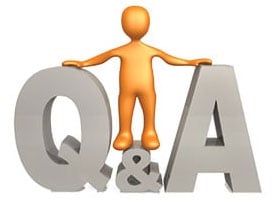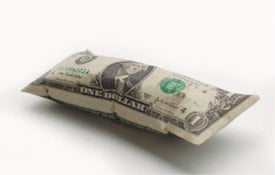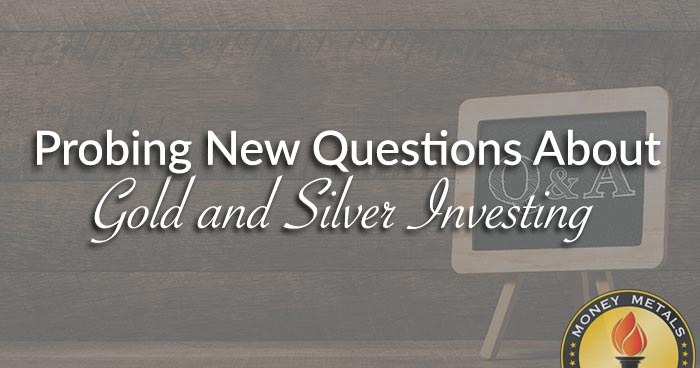We get lots of questions from the public about precious metals.

Some people are curious about the basics. Others are skeptical about the case for owning gold and silver. Still, others are longtime customers who have highly specialized inquiries.
Here we will answer a few of the most common, most broadly relevant questions we get…
Will Fed rate hikes scare away bullion buyers?
It’s possible that anti-gold takes in the financial media will scare some would-be bullion buyers away. But the reality is that the Fed’s rate hikes are nothing to be afraid of – and won’t be unless and until the central bank gets out in front of inflation.
Fed officials opted for only a baby-step rate hike of a quarter point in March despite staring at the worst inflation problem in decades. Their rate-hike campaign may not get far, especially if market volatility and geopolitical turmoil continue to pose risks to the stability of the financial system.
The threats of inflation, supply disruptions, war, and soaring debt levels should make investors nervous.
And it’s likely more of them, not fewer, will find physical precious metals attractive as a safe haven in this environment.
What price would gold need to reach to make a new high in inflation-adjusted terms?
A specific price objective would be somewhat arbitrary since inflation itself is constantly in motion and can be measured in many different ways.
The most popular inflation gauge, the Consumer Price Index, is running at a 40-year high of 7.9%.
As alarming as that number is, it understates the true reality of price level increases faced by American households.
The American Institute for Economic Research puts together what it calls the Everyday Price Index.

Based on its 24 components, Everyday Prices are up 9.5% from a year ago.
Meanwhile, the ShadowStats Alternate Inflation Index shows a whopping 16% year-over-year jump in consumer prices. That’s double the headline CPI number!
Even the Bureau of Labor Statistics' understated inflation data shows that gold is far from an inflation-adjusted high. Despite rallying to over $2,000/oz in March, gold prices remain below their January 1980 peak of $850/oz in real terms. That old high would be equivalent to $3,100/oz after merely adjusting for the portion of currency depreciation reflected in the CPI.
Gold prices could easily exceed that $3,100 level before being at a real peak.
In the event of a shortage of physical gold and silver, will bullion dealers run out of products to sell?
Recent events have certainly put pressure on product availability. Customers have faced higher premiums and delivery delays on some bullion products, though Money Metals has committed significant resources to keep those delays to a minimum and has performed better than its competitors in this regard.
While there doesn’t appear to be an actual shortage of silver at the moment, there are shortages in the pipeline from refiners to mints to wholesalers.
In March, the dysfunctional U.S. Mint announced that shortages of silver blanks for striking coins will force the cancellation of some planned products. The Mint will no longer be producing replica Morgan and Peace Silver Dollars for 2022 – a big disappointment for fans of these historic coins minted from 1878 to 1935.
The world’s most recognized mint can’t figure out how to source the raw materials needed for striking its products.
For the past two years, it has blamed COVID for failing to produce coins in sufficient quantities to meet demand. Now it’s just looking incompetent.
Investors can avoid the elevated premiums associated with U.S. Mint products by opting for privately minted rounds and bars instead. Or even the bullion coins produced by other government mints.
Even if all mints were to suspend operations, there would still be a large secondary market for coins, rounds, and bars that have previously been purchased. Dealers can get new inventory from customers who sell back to them, though it is possible for demand to overwhelm supply and make acquisition difficult at any price.
Isn’t investing in platinum and palladium risky given that governments are moving to abolish gasoline-powered cars?
Platinum and palladium are used in pollution-scrubbing catalytic converters for conventional automobiles. They have many demand sources beyond that, including high-tech industries, jewelers, and mints.
Catalytic converters won’t go away anytime soon, especially given the rising demand for cars from billions of people in India and China who can’t afford Teslas.
Meanwhile, zero-emission vehicles may start more widely employing fuel-cell technologies that require platinum-group metals – along with silver.
That said, platinum and palladium markets can be more volatile and less liquid than gold and silver. The platinum group metals don’t have a history of being used as money like gold and silver, so they may not offer the same level of protection from a currency crisis.
But when either metal can be obtained at a lower price per ounce than gold – and currently platinum can – it tends to be a great value opportunity.





